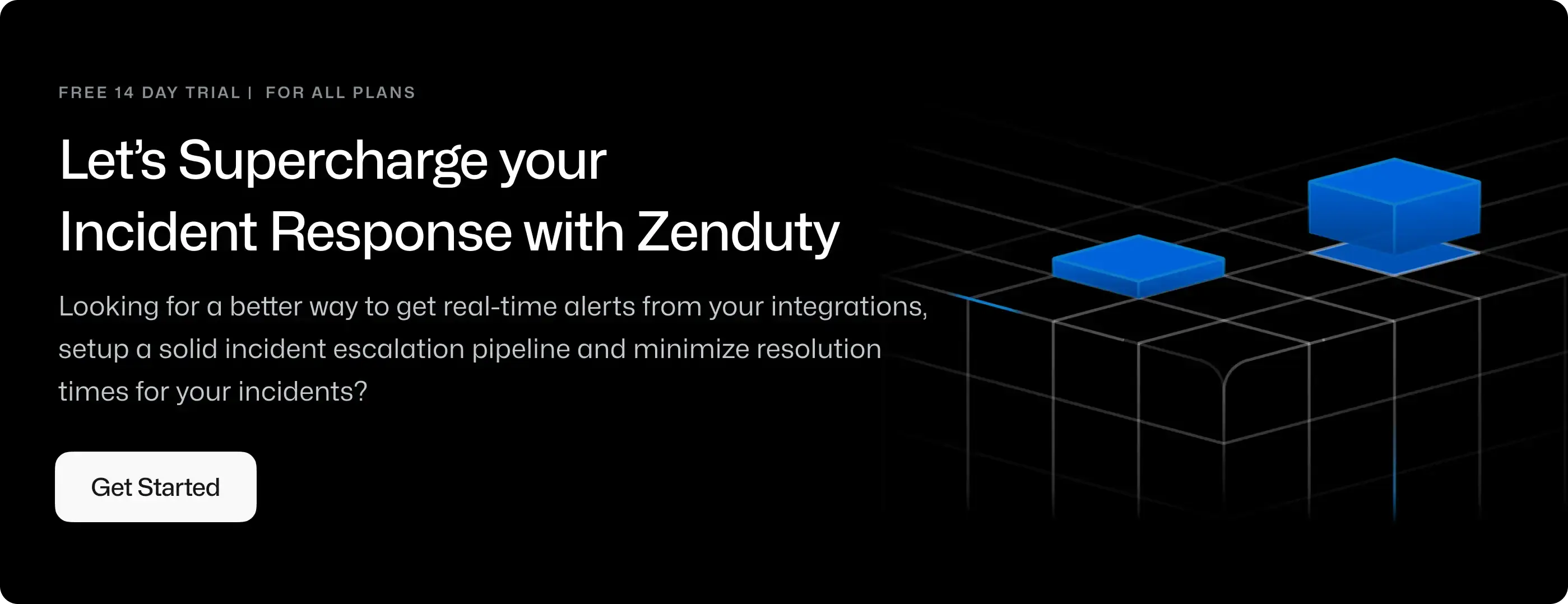NodePing Integration Guide
NodePing provides uptime monitoring for websites and servers. NodePing can monitor a variety of protocols including HTTP/S, SSH, FTP, PING, FTP, SMTP and much more.
What can Zenduty do for NodePing users?
With NodePing's Integration, Zenduty sends new monitored NodePing alerts to the right team and notifies them based on on-call schedules via email, text messages(SMS), phone calls(Voice), Slack, Microsoft Teams and iOS & Android push notifications, and escalates alerts until the alert is acknowledged or closed. Zenduty provides your NOC, SRE and application engineers with detailed context around the monitored NodePing alert along with playbooks and a complete incident command framework to triage, remediate and resolve incidents with speed.
Whenever NodePing detects that a protocol is down, it triggers an alert in Zenduty. Zenduty will then create an incident. When that protocol goes back up, Zenduty will auto-resolve the incident.
You can also use Alert Rules to custom route specific NodePing alerts to specific users, teams or escalation policies, write suppression rules, auto add notes, responders and incident tasks.
To integrate NodePing with Zenduty, complete the following steps:
In Zenduty:
-
To add a new NodePing integration, go to Teams on Zenduty and click on the team you want to add the integration to.
-
Next, go to Services and click on the relevant Service.
-
Go to Integrations and then Add New Integration. Give it a name and select the application NodePing from the dropdown menu.
-
Go to Configure under your Integrations and copy the Webhook URL generated.
In NodePing:
-
Log in to NodePing, and go to Checks and Contacts -> Contacts. Click the Add New Contact button.

-
Select Webhook from the notifications dropdwn, and choose the POST request from the Requests dropdown menu.
-
Enter the webhook url you copied earlier in the URL field.

-
Click the Headers tab. In the New Key field, enter Content-Type, and in the Value field, enter application/json as shown below.

-
Finally, navigate to the Body tab and enter the following payload:
{ "check_id":"{_id}", "state":"{event}", "label":"{label}", "message":"{m}" }The screen will look something like this:

Your webhook for Zenduty is now set up.
-
In order to use the webhook to monitor an endpoint, go to Checks and Contacts -> Checks. Click on the Add New Check button.
-
Under the Select a New Contact to Add dropdown menu, pick the newly added webhook.

-
After filling out the remainder of the form and saving it, the new check is created.
Zenduty will notify you whenever an alert is generated.
